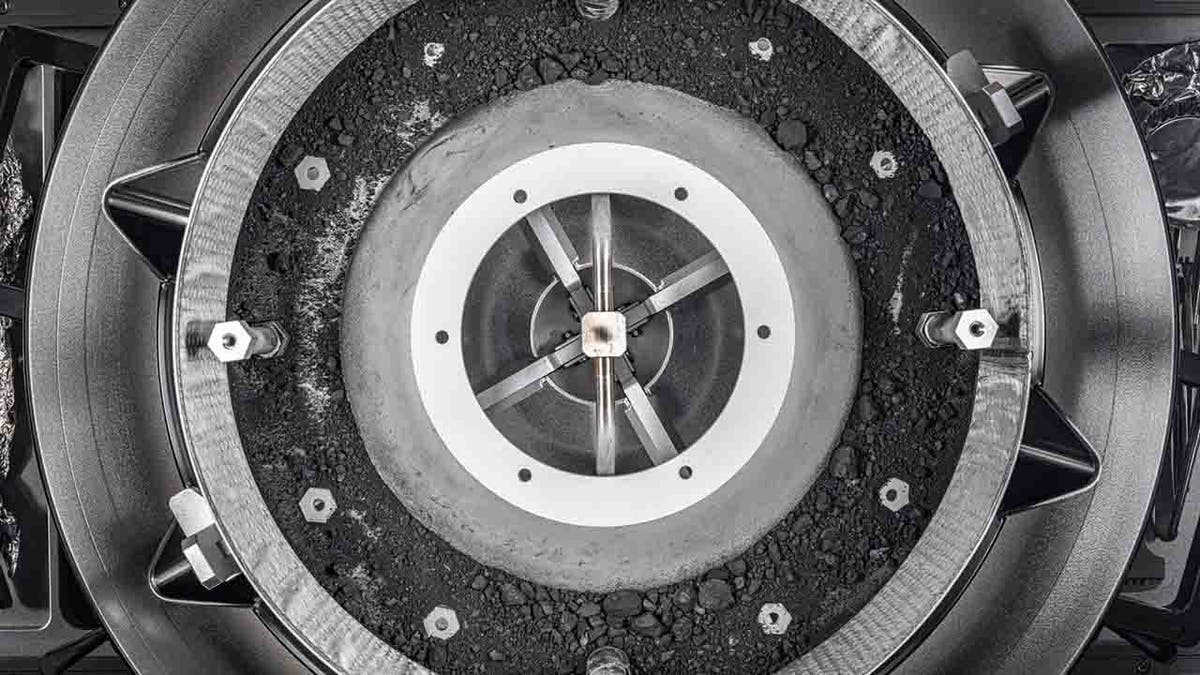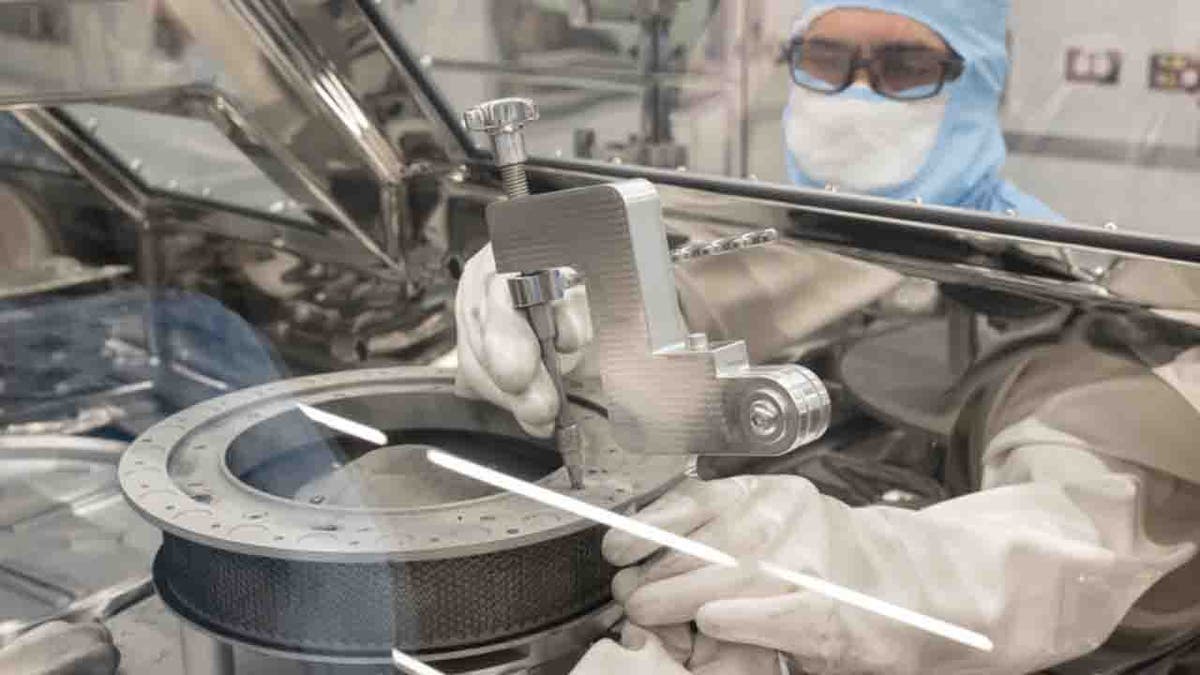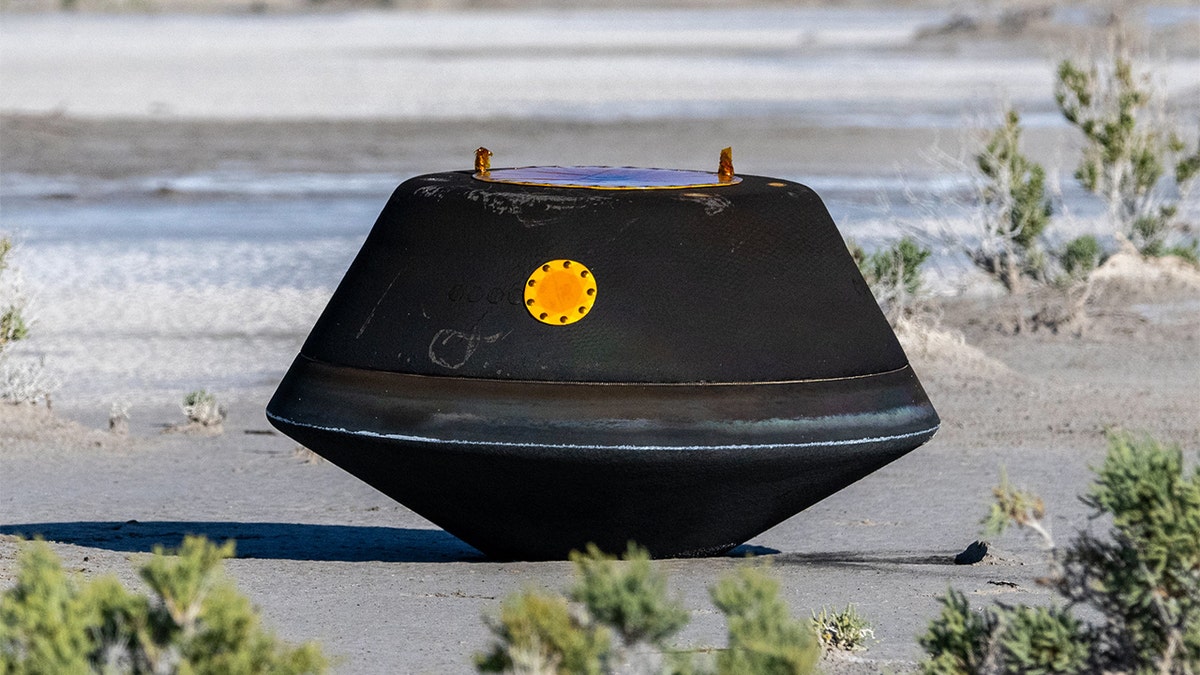Capsule with asteroid samples arrives in Utah
FOX News correspondent Jonathan Serrie reports on the arrival in Utah of a capsule carrying asteroid samples on ‘Special Report.’
A NASA team has finally removed two "stubborn" fasteners on the lid of a return capsule from its OSIRIS-REx spacecraft to reveal the materials it harvested from an asteroid, the space agency said Friday.
OSIRIS-REx ended its historic seven-year, 4 billion-mile round-trip journey to collect samples from the supposedly carbon-rich space rock Bennu in September.
The astromaterials curation team at NASA’s Johnson Space Center in Houston had collected 2.48 ounces (70.3 grams) of asteroid material from the return capsule, but were unable to access the bulk of the materials because two of the 35 fasteners on its lid were stuck. The team was previously unable to remove the fasteners with the tools approved for use inside the OSIRIS-REx glovebox.
The remaining asteroid material includes dust and rocks up to about 0.4 inch (one cm) in size, the space agency said, adding that the sample’s final mass will be determined in the coming weeks.
NASA LAUNCHES MISSION TO INTERCEPT ‘GOD OF CHAOS’ ASTEROID BEFORE IT SCRATCHES EARTH'S ORBIT

A top-down view of the OSIRIS-REx Touch-and-Go-Sample-Acquisition-Mechanism (TAGSAM) head with the lid removed, revealing the remainder of the asteroid sample inside. (NASA/Erika Blumenfeld & Joseph Aebersold)
A catalog of all the Bennu samples will be released later this year. NASA said it will allow scientists and institutions around the world to submit requests to research the materials or to set the asteroid debris on display.

An OSIRIS-REx curation team member attempts to remove the two stuck fasteners preventing access to the asteroid materials on Jan. 10. (NASA/Robert Markowitz)
Following its success, scientists sent the OSIRIS-REx on a second mission to the asteroid Apophis, expected to pass closer to Earth in 2029 than any other similarly-sized asteroid in recorded history.
NASA PLANS TO BUILD A SUBDIVISION OF HOMES ON THE MOON, AND IT MAY BE SOONER THAN YOU THINK
Now renamed OSIRIS-APEX (Origins, Spectral Interpretation, Resource Identification, and Security – Apophis Explorer), NASA says the spacecraft will drop within 16 feet of the asteroid's surface and fire its thrusters to stir up rocks and dust, offering scientists a glimpse of what lies beneath.

The sample return capsule from NASA’s OSIRIS-REx mission is seen shortly after touching down in the desert on Sept. 24, 2023, at the Department of Defense's Utah Test and Training Range. The sample was collected from the asteroid Bennu in October 2020 by NASA’s OSIRIS-REx spacecraft. (NASA/Keegan Barber)
Apophis is a more than 1,000-foot-wide space rock named for an Egyptian deity and nicknamed the "God of Chaos."
Fox News’ Hannah Ray Lambert contributed to this report.





















